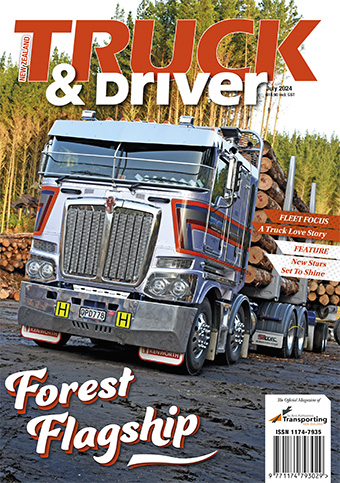
Why most of our future workforce won’t be New Zealand born
Posted: 12-Apr-2024 |
Last Sunday, a quiet afternoon resting with the family after a busy morning at the school fair, my phone lit up with TVNZ wanting comment on the closure of the immigration pathway for truck drivers.
What closure I asked?
Turns out that we, along with the rest of industry, were blind-sided by the Minister of Immigration announcing that the special immigration status for class 4 and 5 truck and bus drivers was revoked with immediate effect.
This was a surprise in more ways than one, not checking in with industry first was not something that I expected from this government.
It is a decision that has major implications for the road freight industry, and the economy.
But you may ask, aren’t we in the middle of an economic slow down, and aren’t there a bunch of trucks parked up and too many drivers? So what’s the problem?
Yes, a silver lining of the recession is that we may have a short-lived reprieve on demand for drivers. But let’s not forget the lesson learned in the 2008 global financial crisis: the minute the economy starts to heat up again, the driver shortage comes back with a vengeance. And this time, the structural settings in the labour market are far less favorable than after the GFC.
Truck drivers are in demand across many industries and this is often overlooked. We are competing with other sectors in New Zealand that need class 4 & 5 drivers.
The Minister said that the pathway was only temporary, and that the road transport industry needs to attract and retain workers through better conditions and being an attractive employer. On the face of it, a reasonable request.
Here are a few facts as to why it is not as simple as the Minister makes out. The road freight industry has a structural problem with labour, which is piggy backing on the New Zealand labour pool challenges:
- We’re not having enough children - NZ has one of the lowest birth rates in the world (1.52 babies per woman, it takes 2.1 to naturally replace a population).
- Lots of the children we are having aren’t attending school enough – with only 45.9% attending school (compared to 75% in the UK and 70% in the US).
- Over 13% of our workers are aged over 70 years old
- We are seeing record emigration, to Australia in particular, of our youngest and most capable.
So, like most of the west, our workforce is getting older, we’re not replacing our population naturally, and an alarmingly high number of families have decided attending school is an optional pastime.To further the challenge, there are some significant structural issues in the road freight workforce:
- The average age of a truck driver is 57 years old.
- Driving heavy vehicles requires skilled workers, it is technically challenging and highly regulated.
- The conveyor belt of new workers has some holes in it - working up to a class 4 and 5 licence takes too long and is expensive to train.
- Vocational training into the industry is not performing as well as it needs to.
- Every sector of the economy is going after the exact same workforce we are (not to mention overseas employers directly targeting New Zealand).
- A bidding war for transport labour leads to higher labour costs, increasing the cost of every good we buy.
Road freight, along with the rest of the New Zealand economy, now has an incurable addiction to foreign labour.
As an industry, we need to start wrapping our collective heads around the fact that the future of our workforce is coming from overseas. We need to face up to this fact, and be grateful that we are able to attract foreign workers here in a globally competitive market. This raises some hard questions:
What are we going to do to attract drivers now that residency is off the table?
What are we doing to set up foreign drivers for success in New Zealand?
How are we training them and preparing them for New Zealand conditions?
What measures do we have in place to protect foreign workers from exploitation?
Vexingly there is very little data to help. How many foreign-born drivers are currently working in the industry? How many truck driver licence holders are there, and how many are working and how many out of work? How many do we need?
NRC will be working on answering these questions with government. We want New Zealand’s road freight industry to be recognised as a great place to work and grow a career, and one that looks after it’s people no matter where they are from.
In the meantime, please turn the tap back on Minister – we need quality overseas drivers that are here for the long haul. Not reliant on temporary Visa holders that by the time they are trained they are forced to leave.
Justin Tighe-Umbers, CEO, National Road Carriers Assn




 + EQUIPMENT GUIDE - FREE
+ EQUIPMENT GUIDE - FREE
